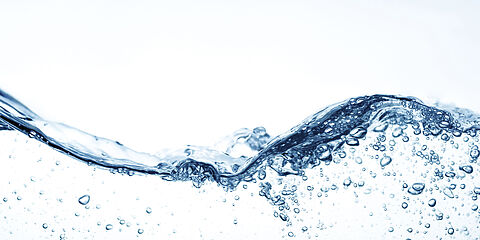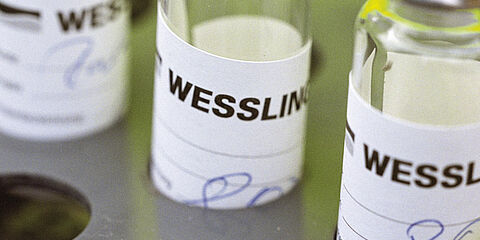Analysis of microplastics in the environment and foods
WESSLING is one of the few laboratories with the necessary know-how and equipment for analysing microplastics in water and sediments, in foods, beverages or cosmetics. Together with partners from industry and science, our team of experts is driving forwards the status of research on microplastics.
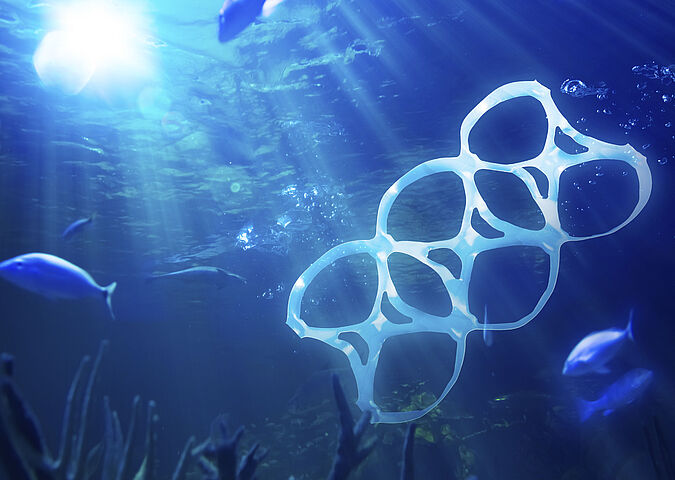
Thanks to their outstanding properties, plastics accompany us in our daily lives, whether as a toothbrush in the bathroom in the morning, in the train or car on the way to work, or when shopping in a supermarket.
However, plastics also return to the environment – as tyre wear or thoughtlessly discarded rubbish (littering). Plastic is therefore becoming an increasingly major problem for man and nature: in the environment, the ocean and rivers, plastics break down to form microplastics, particles or plastic particulates measuring one micrometre to five millimetres in size. They contaminate the environment; their effects on flora and fauna are largely unexplored. The most widely used types of plastic include polyethylene (PE), polypropylene (PP), polyvinyl chloride (PVC) or polyethylene terephthalate (PET), for example.
Microplastics in water or soil return to our food chain. In the same way, the minute particles of plastic from products such as toothpaste or cosmetics return to the environment – via sewage works, for instance. This is why WESSLING is handling this topic in various research projects and has a department which is specialised in analysing microplastics in our environment and food.
Microplastics: services in detail
Microplastics: services in detail
Microplastics in the environment
Analysis of microplastics in the environment
Our engineers and life scientists in the particle analysis and environmental analysis fields are readily available to assist you with their extensive know-how regarding the topic of microplastics in the environment – in an advisory capicity and also with qualified sampling and the development of specific sample preparation methods for analysing and identifying microplastics.
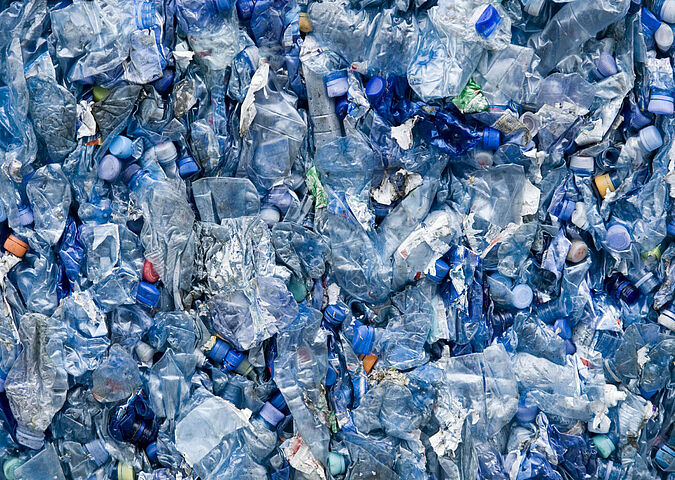
Microplastics enter the environment in various ways such as carelessly discarded rubbish, through waste water or tyre wear. Once there, it takes a very long time until they break down from sunlight and chemical, physical, biological or mechanical processes to form smaller particles down into the micrometre range. These particles consist of various types of plastic such as polyethylene (PE), polypropylene (PP), polyvinyl chloride (PVC), polystyrene (PS) or polyethylene terephthalate (PET).
Analysis of microplastics in waste water
Sewage plants cannot completely retain the minute plastic particles, and a result, they enter the environment. An added problem is that clothing made from synthetics lose a lot of plastic fibres in every wash; these then are released into the sewage system.
Industrial waste water is also potentially contaminated with microplastics from machine abrasion, for instance. Amongst others, WESSLING advises companies, communities, municipal utilities and waterworks on the topic of microplastics, and performs analyses.
Analysis of microplastics in drinking water
Studies show that drinking water can also contain microplastics. The WESSLING experts use the latest spectroscopic analysis techniques to examine drinking water for microplastics and determine the quality of residues. The WESSLING experts are available to drinking water suppliers with their experience and know-how, and offer individual advice on the optimal scope of the analysis.
Microplastics adsorb micropollutants
Pesticides, micropollutants or polycyclic aromatic hydrocarbons (PAK) can also be absorbed on the surface of the particles and cause a toxicological effect. WESSLING investigates how pollutants adhere to the minute plastic particles. Findings can enable helpful conclusions to be drawn as regards the effect of microplastics on the ecological system and man.
This topic is also the subject of the EU "MikroPlastiCarrier" research project. Here, WESSLING is using new methods to investigate how microplastics enter the environment and how the particles affect living organisms along with other partners.
Our services in the field of microplastics:
- Performance of all analyses: sampling, sample preparation and detection
- Analysis of microplastics using FTIR microscopy and pyrolysis GC/MS
- Qualified sampling
- Project-related development of specific analysis methods for different matrices
Microplastics: services in detail
Microplastics in foods
Analysis of microplastics in the foods
Current studies show that microplastics are increasingly being found in food, e.g. in sea salt or fish. Drinking water in plastic bottles can also contain microplastics. WESSLING supports food and beverage industry customers in controlling the quality of their products with advice and precise analysis.
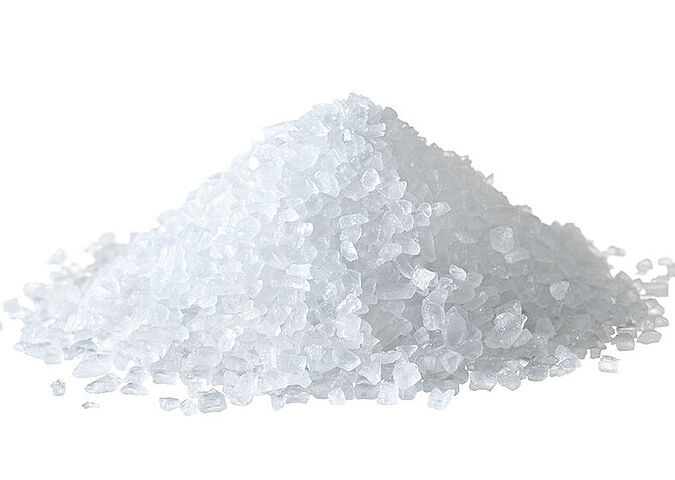
Food manufacturers, distributors and retailers are increasingly faced with the challenge of also testing their products for microplastics as part of their high quality standards. WESSLING is one of the few laboratories with the necessary know-how and equipment for performing these analyses. The particles, which measure between one micrometre and five millimetres in size, can only be detected with the aid of sensitive methods. Our experts analyse your samples using recognised procedures, and are also on hand with their wealth of experience to provide advice.
We analyse foods for microplastics
Microplastics are increasingly occurring in certain foods such as sea salt. In current studies, researchers have detected up to 1,800 microgrammes of microplastics per kilogramme in sea salt, including polyethylene (PE), polypropylene (PP) and polyethylene terephthalate (PET), which are some of the main constituents of packaging refuse.
This result is attributable to the harvesting process: some sea salts form a thin layer of salt on the surface of the water. As microplastic particles are lighter than water, they float on the surface of the water and thus enter sea salt batches during the skimming process. We check and analyse your sea salt for contaminants such as microplastic particles so that you can ensure the high quality of your products.
Microplastics: services in detail
MicroPlastiCarrier
MikroPlastiCarrier: the impact of microplastics on people & environment
In the “MicroPlastiCarrier” research project funded by the European Fund for Regional Development (ERDF), WESSLING is investigating the impact of microplastics on people and the environment.
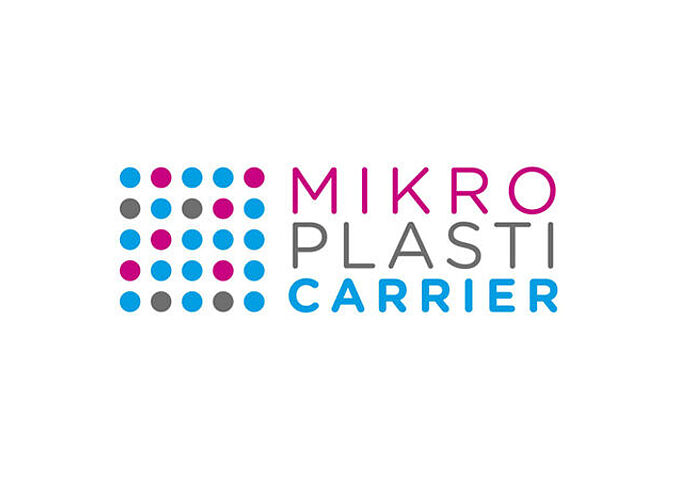
We are coordinating this joint project in collaboration with three other project partners: the Biomedical Technology Centre (BMTZ) of the University of Munster, Quantum Analysis GmbH and Tascon GmbH.
The high-level expertise of the four project partners was decisive in granting funding. The project partners are working together to develop faster and easier analytical methods for the tiny particles. Moreover, important findings on the danger to living organisms of microplastics and harmful substances on their surface are to be investigated.
Sponsored by:

Microplastics – a research challenge
Identifying microplastic particles up to a size of five millimetres is currently very laborious and time-consuming. This also means that the impact of microplastics on living organisms has not yet been adequately studied. The consumption of contaminated animals, plants or drinking water could pose a risk to human health. There is therefore an important and urgent need for research into the identification of microplastic particles in the environment and into the sources and the potential risk.
WESSLING analysis and expertise on all aspects of microplastics
At WESSLING, we support the research project primarily through our expertise in collecting, preparing and delivering samples. In addition, we work closely with the Biomedical Technology Centre (BMTZ) of the Westphalian Wilhelms University of Munster Medical Faculty on the eco- and human-toxicological evaluation of the effects of microplastic particles on aquatic organisms and humans. As project coordinator, Dr. Jens Reiber, microplastics expert at WESSLING, ensures that the individual work packages run smoothly and supports the flow of information between the project partners to maintain the progress of the project.
Your contact regarding MikroPlastiCarrier
We will be happy to support you.
- Frédéric Jeampierre
- +33 7 56 37 24 99
- frederic.jeampierre@wessling.fr

Development of innovative analytical methods for the identification of microplastics in our waters
Together with its project partners, WESSLING is pursuing the goal of a more reliable identification of microplastics up 250 microns in size in liquids, such as waste water, surface waters, drinking water and process water. We are developing new analytical methods for this purpose by combining optical spectroscopy and flow cytometry (FCM) methods. Combined with innovative microfluidics and laser technology, this results in saving a considereable amount of time in comparison with the time-consuming and laborious filtration techniques used until now.
The project will also allow us to find out more about if and how harmful substances adhere to the small plastic particles. The findings could lead to useful conclusions about the potential toxic effects of microplastics on the ecological system and on human health.
Key data:
Project period:
11/2016 – 11/2019
Project partners:
Biomedical Technology Centre (BMTZ) of the Westphalian Wilhelms University of Munster Medical Faculty
Quantum Analysis GmbH
Tascon GmbH
WESSLING GmbH (project coordinator)
Microplastics: services in detail
Tyre Wear in the Environment (RAU)
Research project: Tyre Wear in the Environment (RAU)
WESSLING is bringing its expertise from the field of micro and nanoanalysis to bear in the new research project "Tyre Wear in the Environment". Together with other partners, WESSLING is determining how microparticles from tyres enter the environment.
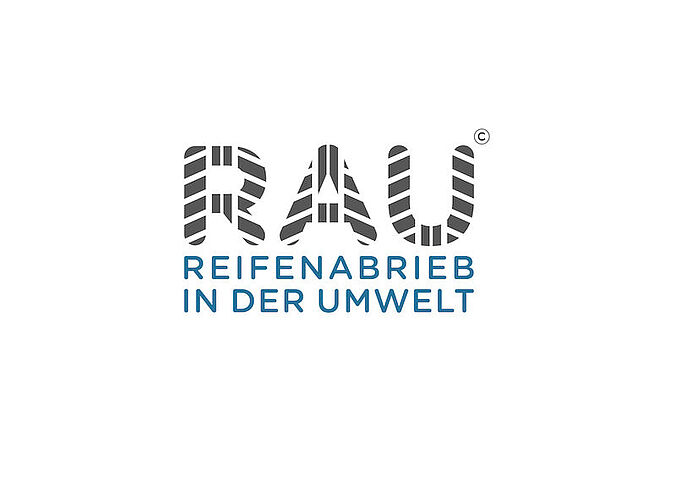

The challenge – how much tyre wear is entering the environment?
In terms of protecting our water, environmental pollution caused by plastic is one of our biggest global challenges. This is particularly true of microplastics: the minute particles are barely visible and enter our food chain via water. Vehicle tyre wear is a source of microplastics that is not to be underestimated: globally, there are around 1.3 billion motor vehicles whose tyre wear enters our rivers and oceans via precipitation.
As yet, little is known about the quantities of tire wear that enter our environment and the effects that microplastics have on man and animals. This is precisely where the joint "Tyre Wear in the Environment" project comes into play. Together, the partners intend to analyse how these tyre particles enter the environment. The challenge in this case is to determine the content of tyre wear from an environmental sample in terms of both quality and quantity.
Our contribution – WESSLING analysis and expertise
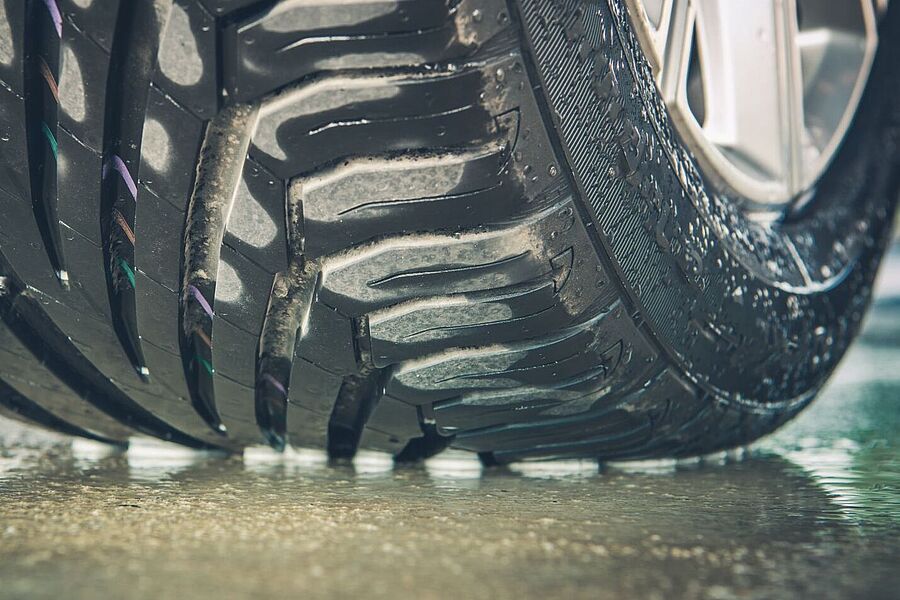
We will be bringing our expertise in the development, implementation and evaluation of chemical and physical analysis concepts for microplastics to the joint project. Specifically, this means that the WESSLING experts will initially be developing procedures for separating the tyre wear from accompanying substances from the environment (such as plant material or fine sediment). They will develop standardised methods for processing aqueous samples such as road run-off, solid samples such as road sweepings and airborne particles. In a subsequent step, we will develop analysis methods for examining various key parameters using different analysis techniques. This will enable us to obtain new findings regarding the scope of tyre wear on the roads and to determine the substance groups in its composition.
Our goal: reducing microparticles in our environment
This project is intended to establish an action basis for reducing the influence of tyre wear on the environment in the future. For instance, road sweeping companies or planners can derive suitable measures based on an evaluation matrix. The results can also be incorporated in national and European regulations.
Key data:
Project period: 08/2017 – 07/2020
Project partners:
Associated partners:
Our services in the field of microplastics analysis:
- Performance of all analyses: sampling, sample preparation and detection
- Analysis of microplastics using FTIR microscopy and pyrolysis GC/MS
- Qualified sampling
- Project-related development of specific analysis methods for different matrices
Deadlines:
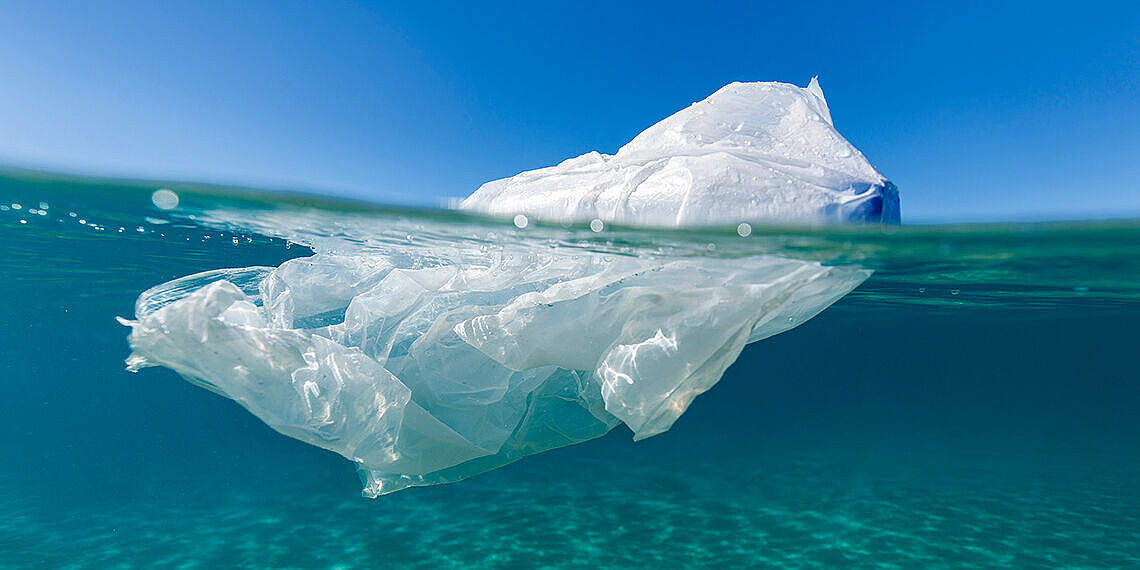
- The European Union commits to adopt by 12 January 2024 a methodology for measuring microplastics for monitoring purposes.
- By 12 January 2029, the European Commission will present a report on the potential health risks and hazards caused by the presence of microplastics, pharmaceuticals, and endocrine disruptors in water intended for human consumption (EDCH).
Your contact for the topic of microplastics
- Frédéric Jeampierre
- +33 7 56 37 24 99
- frederic.jeampierre@wessling.fr

